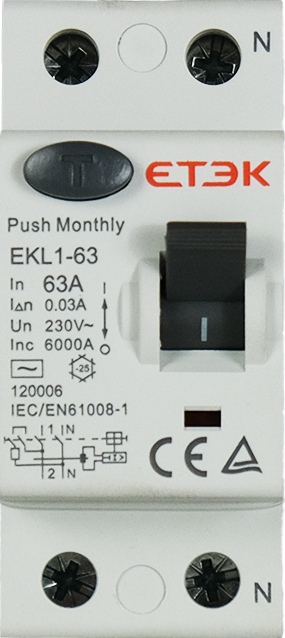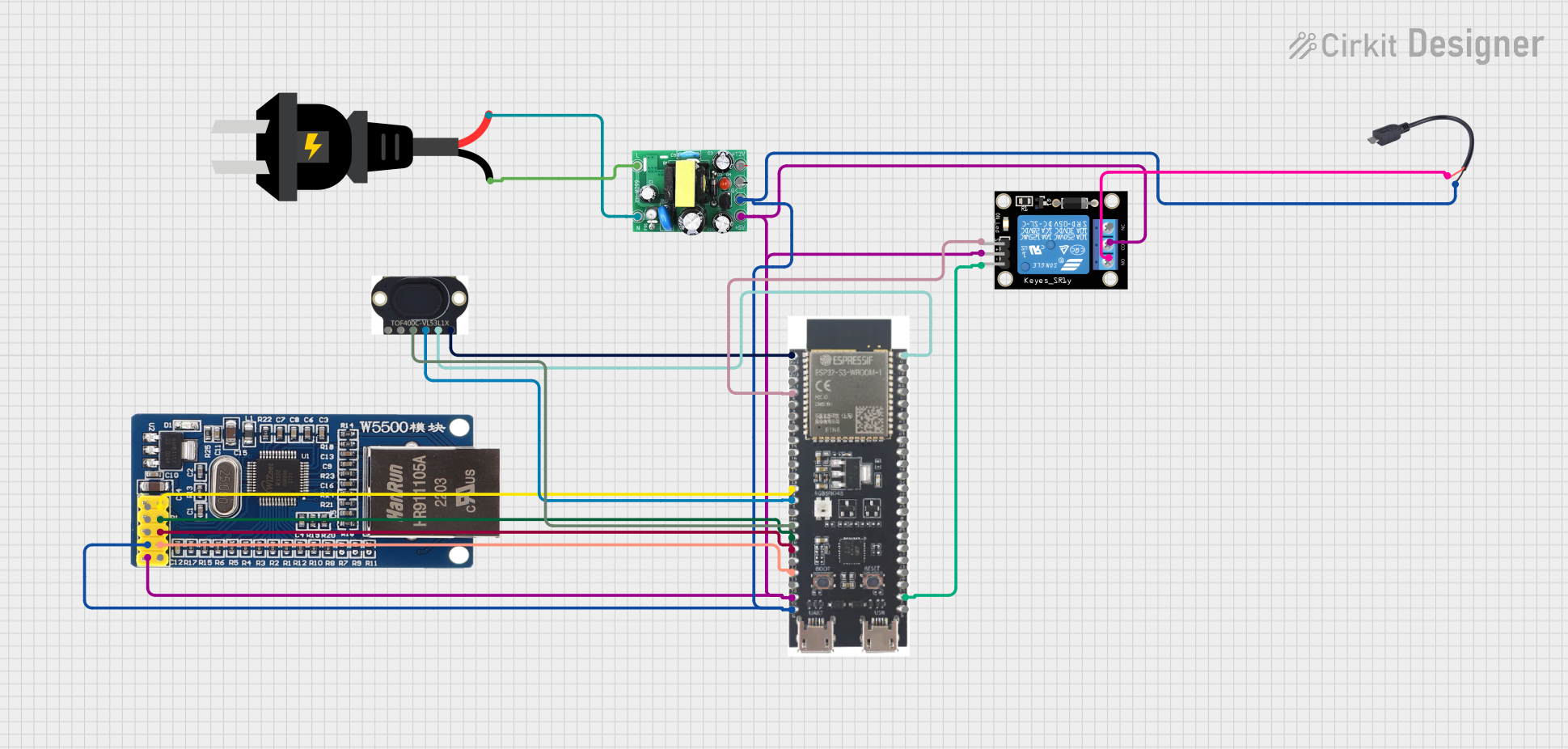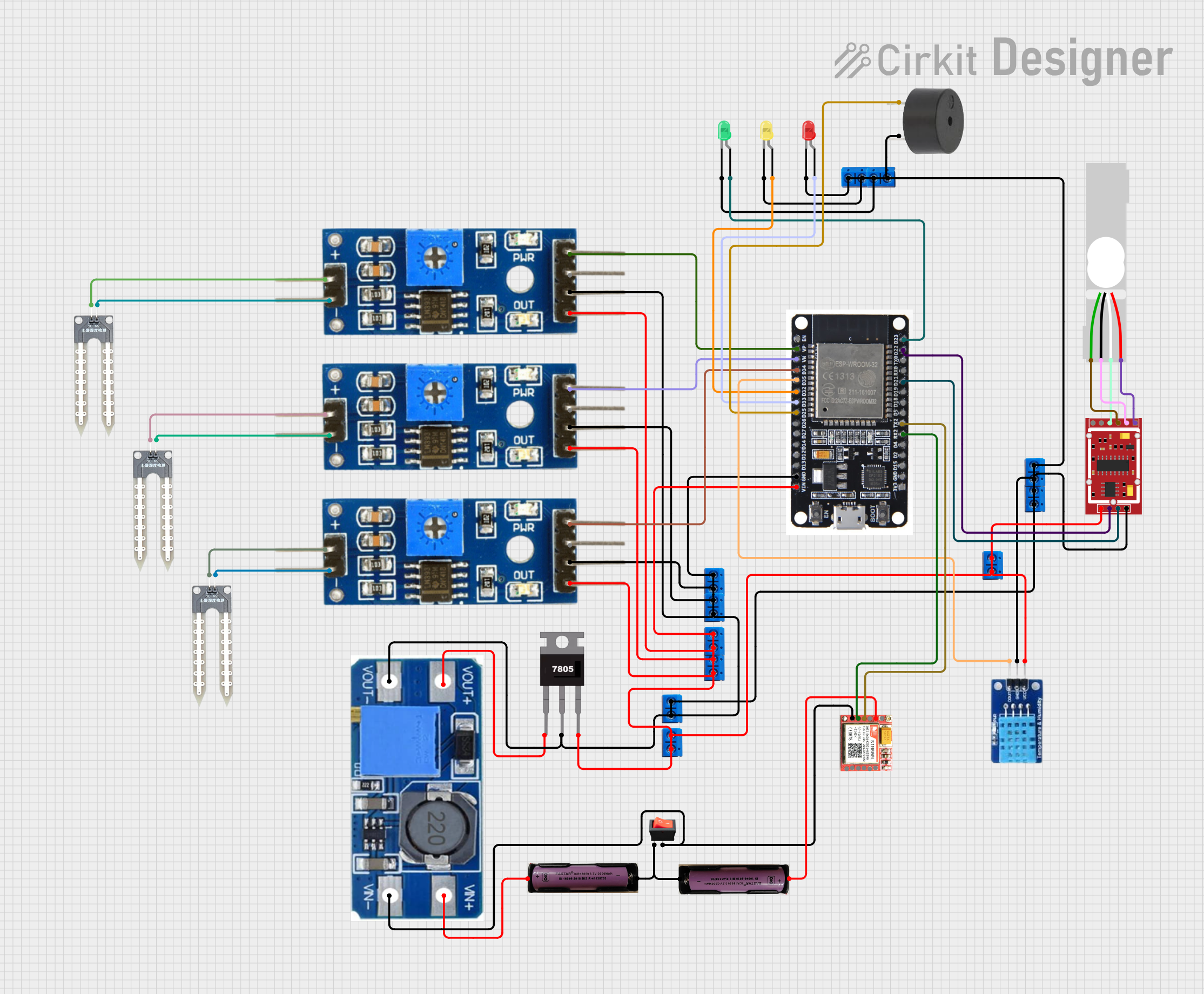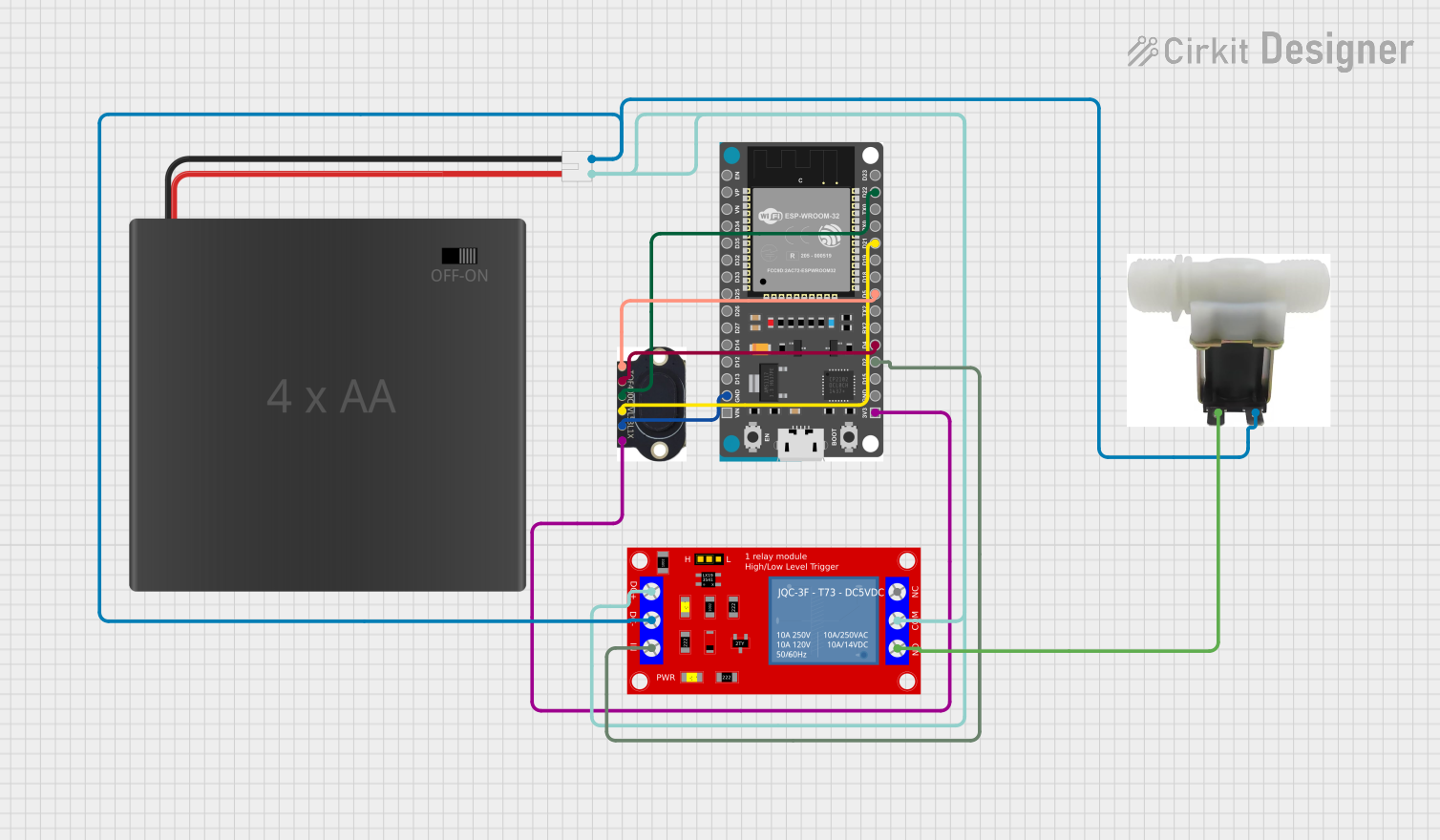
How to Use Earth Leakage ELK1-63: Examples, Pinouts, and Specs

 Design with Earth Leakage ELK1-63 in Cirkit Designer
Design with Earth Leakage ELK1-63 in Cirkit DesignerIntroduction
The Earth Leakage ELK1-63, manufactured by ETEK, is a circuit protection device designed to detect and interrupt earth faults in electrical systems. It enhances safety by preventing electric shock and fire hazards caused by leakage currents. This device is commonly used in residential, commercial, and industrial electrical installations to ensure compliance with safety standards and protect both equipment and personnel.
Explore Projects Built with Earth Leakage ELK1-63

 Open Project in Cirkit Designer
Open Project in Cirkit Designer
 Open Project in Cirkit Designer
Open Project in Cirkit Designer
 Open Project in Cirkit Designer
Open Project in Cirkit Designer
 Open Project in Cirkit Designer
Open Project in Cirkit DesignerExplore Projects Built with Earth Leakage ELK1-63

 Open Project in Cirkit Designer
Open Project in Cirkit Designer
 Open Project in Cirkit Designer
Open Project in Cirkit Designer
 Open Project in Cirkit Designer
Open Project in Cirkit Designer
 Open Project in Cirkit Designer
Open Project in Cirkit DesignerCommon Applications and Use Cases
- Protection against electric shock in residential and commercial buildings.
- Prevention of fire hazards caused by earth leakage currents.
- Industrial equipment safety in high-risk environments.
- Integration into distribution boards for comprehensive circuit protection.
Technical Specifications
Key Technical Details
| Parameter | Value |
|---|---|
| Manufacturer | ETEK |
| Part ID | ELK1-63 |
| Rated Voltage | 230/400V AC |
| Rated Current | 16A, 25A, 32A, 40A, 50A, 63A |
| Rated Residual Operating Current (IΔn) | 30mA, 100mA, 300mA, 500mA |
| Frequency | 50/60 Hz |
| Breaking Capacity | 6kA |
| Number of Poles | 2P (Single Phase) or 4P (Three Phase) |
| Operating Temperature Range | -25°C to +40°C |
| Mounting Type | DIN Rail |
| Compliance Standards | IEC 61008-1, IEC 61008-2-1 |
Pin Configuration and Descriptions
The ELK1-63 is a modular device with input and output terminals for connection to the electrical system. Below is the pin configuration:
For 2P (Single Phase) Model
| Pin Number | Label | Description |
|---|---|---|
| 1 | L (Input) | Line input terminal |
| 2 | N (Input) | Neutral input terminal |
| 3 | L (Output) | Line output terminal |
| 4 | N (Output) | Neutral output terminal |
For 4P (Three Phase) Model
| Pin Number | Label | Description |
|---|---|---|
| 1 | L1 (Input) | Phase 1 input terminal |
| 2 | L2 (Input) | Phase 2 input terminal |
| 3 | L3 (Input) | Phase 3 input terminal |
| 4 | N (Input) | Neutral input terminal |
| 5 | L1 (Output) | Phase 1 output terminal |
| 6 | L2 (Output) | Phase 2 output terminal |
| 7 | L3 (Output) | Phase 3 output terminal |
| 8 | N (Output) | Neutral output terminal |
Usage Instructions
How to Use the Component in a Circuit
- Mounting: Install the ELK1-63 on a standard DIN rail in the distribution board.
- Wiring:
- For single-phase systems, connect the line and neutral wires to the input terminals (L and N) and the load to the output terminals.
- For three-phase systems, connect the three phase wires (L1, L2, L3) and neutral wire to the input terminals, and the load to the corresponding output terminals.
- Testing:
- Use the built-in test button to verify the functionality of the device. Pressing the test button should trip the device, indicating proper operation.
- Resetting:
- After a trip, inspect the circuit for faults. Once resolved, reset the device by toggling the switch to the "ON" position.
Important Considerations and Best Practices
- Ensure the rated current and residual operating current match the requirements of your electrical system.
- Regularly test the device using the test button to confirm its functionality.
- Avoid overloading the device beyond its rated current capacity.
- Ensure proper grounding of the electrical system for effective operation.
- For three-phase systems, ensure balanced loading across all phases to prevent nuisance tripping.
Arduino Integration
The ELK1-63 is not directly compatible with Arduino or other microcontrollers, as it is a high-voltage protection device. However, it can be used in conjunction with current sensors or relays to monitor and control electrical systems interfaced with Arduino. Below is an example of how to monitor the status of the ELK1-63 using a relay and Arduino:
/*
Example: Monitor ELK1-63 Status with Arduino
This code reads the status of a relay connected to the ELK1-63 output.
If the ELK1-63 trips, the relay will open, and the Arduino will detect it.
*/
const int relayPin = 2; // Pin connected to the relay output
const int ledPin = 13; // Built-in LED to indicate status
void setup() {
pinMode(relayPin, INPUT_PULLUP); // Configure relay pin as input with pull-up
pinMode(ledPin, OUTPUT); // Configure LED pin as output
Serial.begin(9600); // Initialize serial communication
}
void loop() {
int relayStatus = digitalRead(relayPin); // Read relay status
if (relayStatus == HIGH) {
// Relay is open, indicating ELK1-63 has tripped
digitalWrite(ledPin, LOW); // Turn off LED
Serial.println("ELK1-63 has tripped. Check the circuit for faults.");
} else {
// Relay is closed, indicating normal operation
digitalWrite(ledPin, HIGH); // Turn on LED
Serial.println("ELK1-63 is operating normally.");
}
delay(1000); // Wait for 1 second before next reading
}
Troubleshooting and FAQs
Common Issues Users Might Face
Device Does Not Trip During Testing:
- Cause: Faulty test button or internal mechanism.
- Solution: Replace the device and ensure proper installation.
Frequent Nuisance Tripping:
- Cause: Overloading, unbalanced loads, or high leakage currents.
- Solution: Check for overloading or unbalanced loads. Verify the residual current rating is appropriate for the system.
Device Fails to Reset:
- Cause: Persistent fault in the circuit.
- Solution: Inspect the circuit for faults and resolve them before resetting.
Overheating of the Device:
- Cause: Loose connections or overcurrent.
- Solution: Tighten connections and ensure the current does not exceed the rated value.
Solutions and Tips for Troubleshooting
- Always disconnect power before inspecting or troubleshooting the device.
- Use a multimeter to check for leakage currents and verify proper wiring.
- Regularly test the device using the test button to ensure it is functioning correctly.
- Consult a licensed electrician for installation and troubleshooting in complex systems.
By following this documentation, users can effectively install, operate, and maintain the Earth Leakage ELK1-63 for enhanced electrical safety.